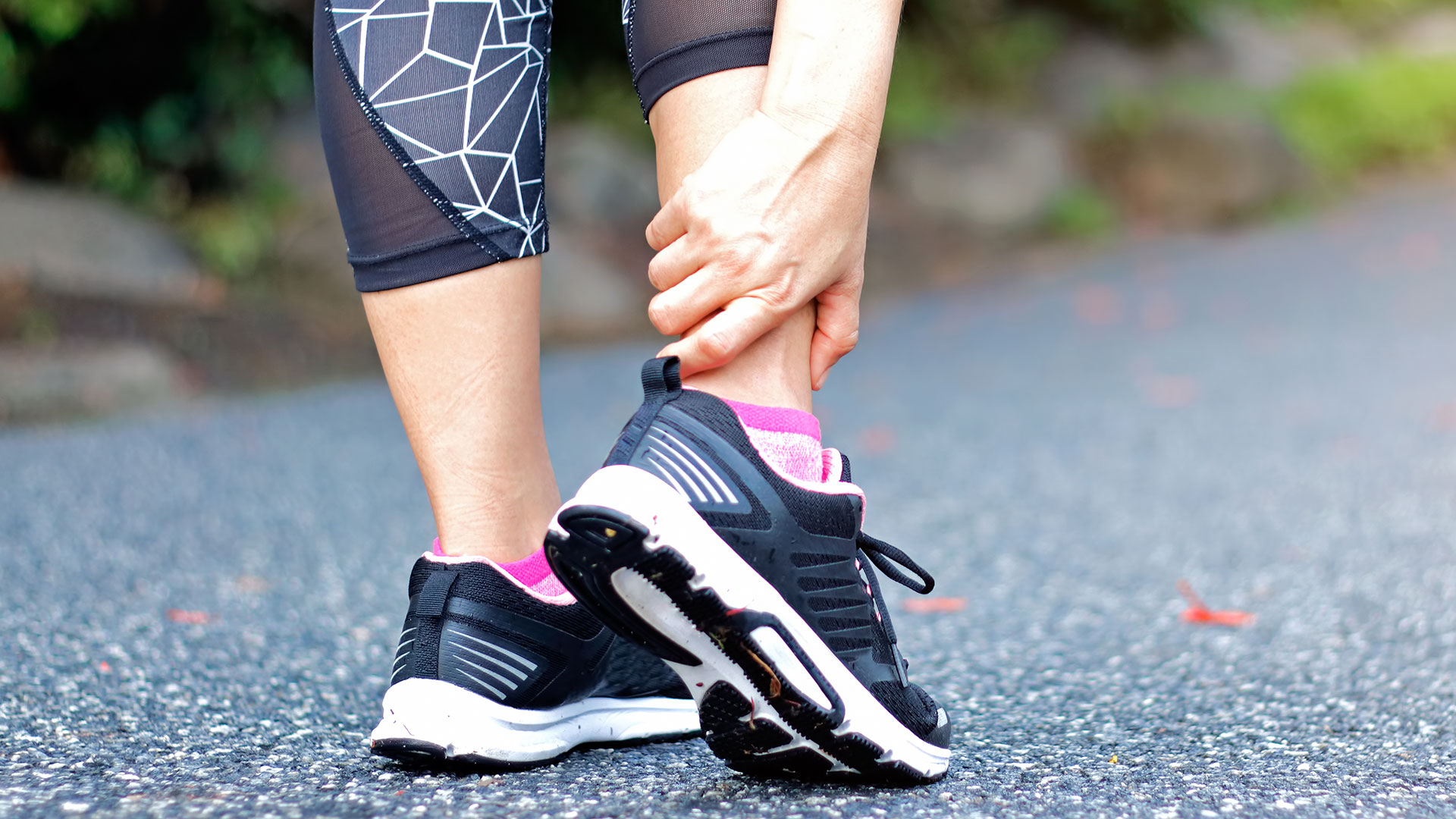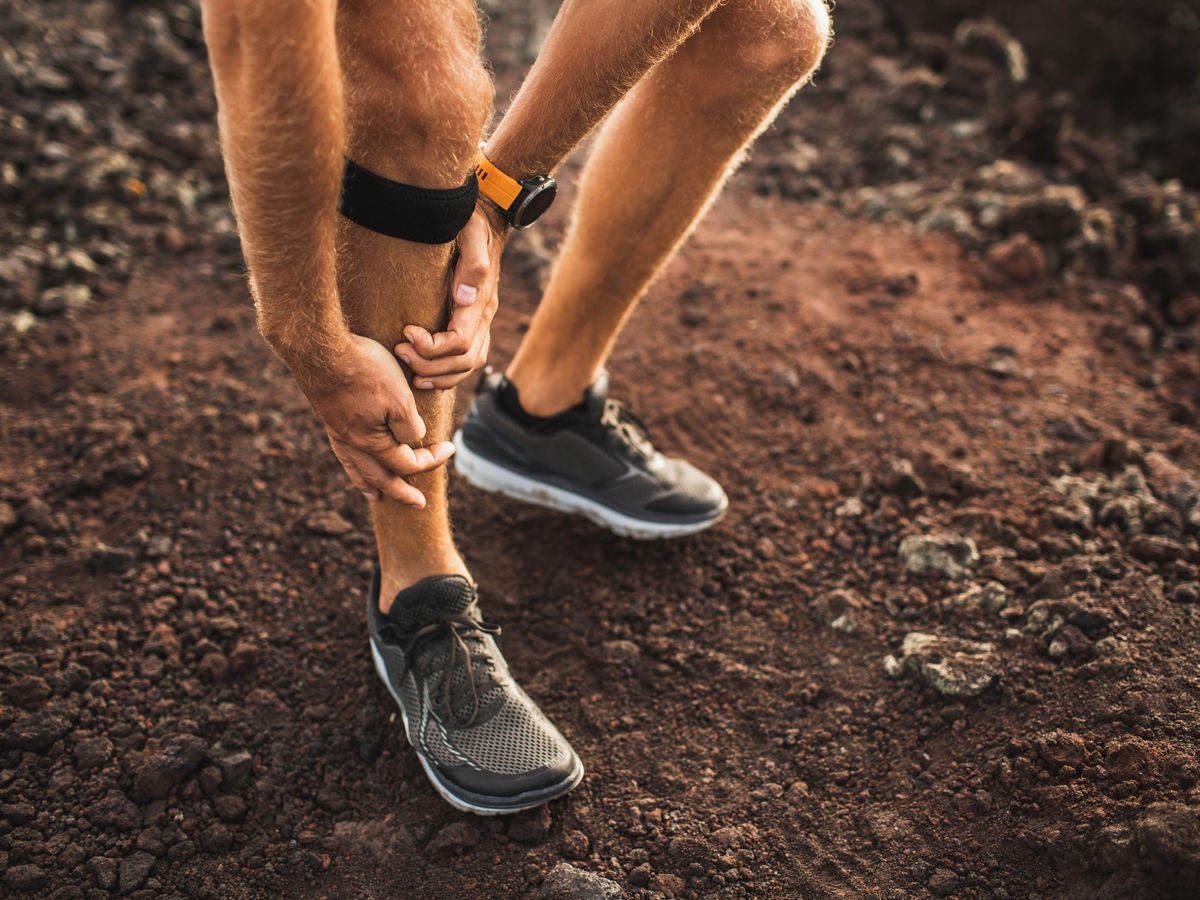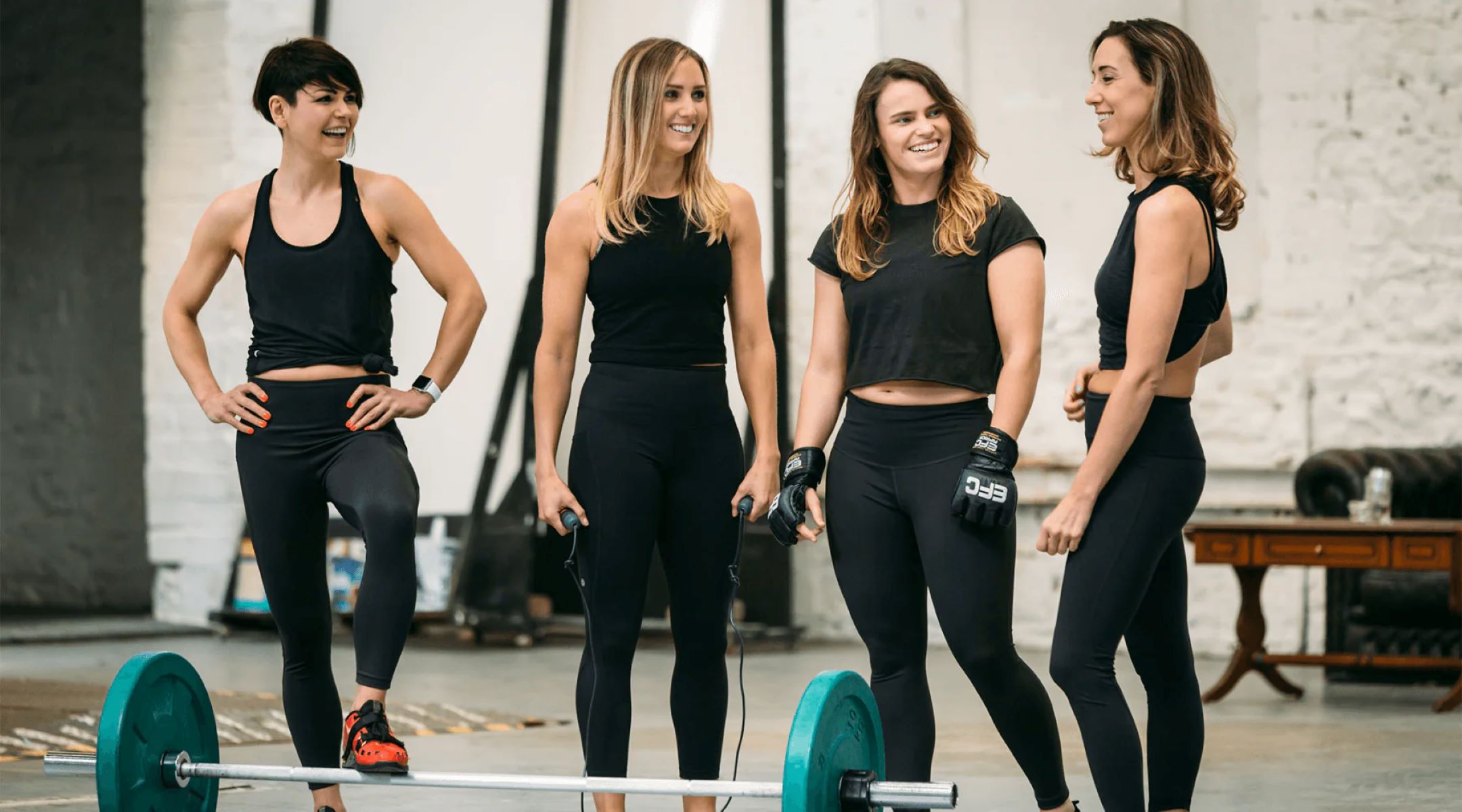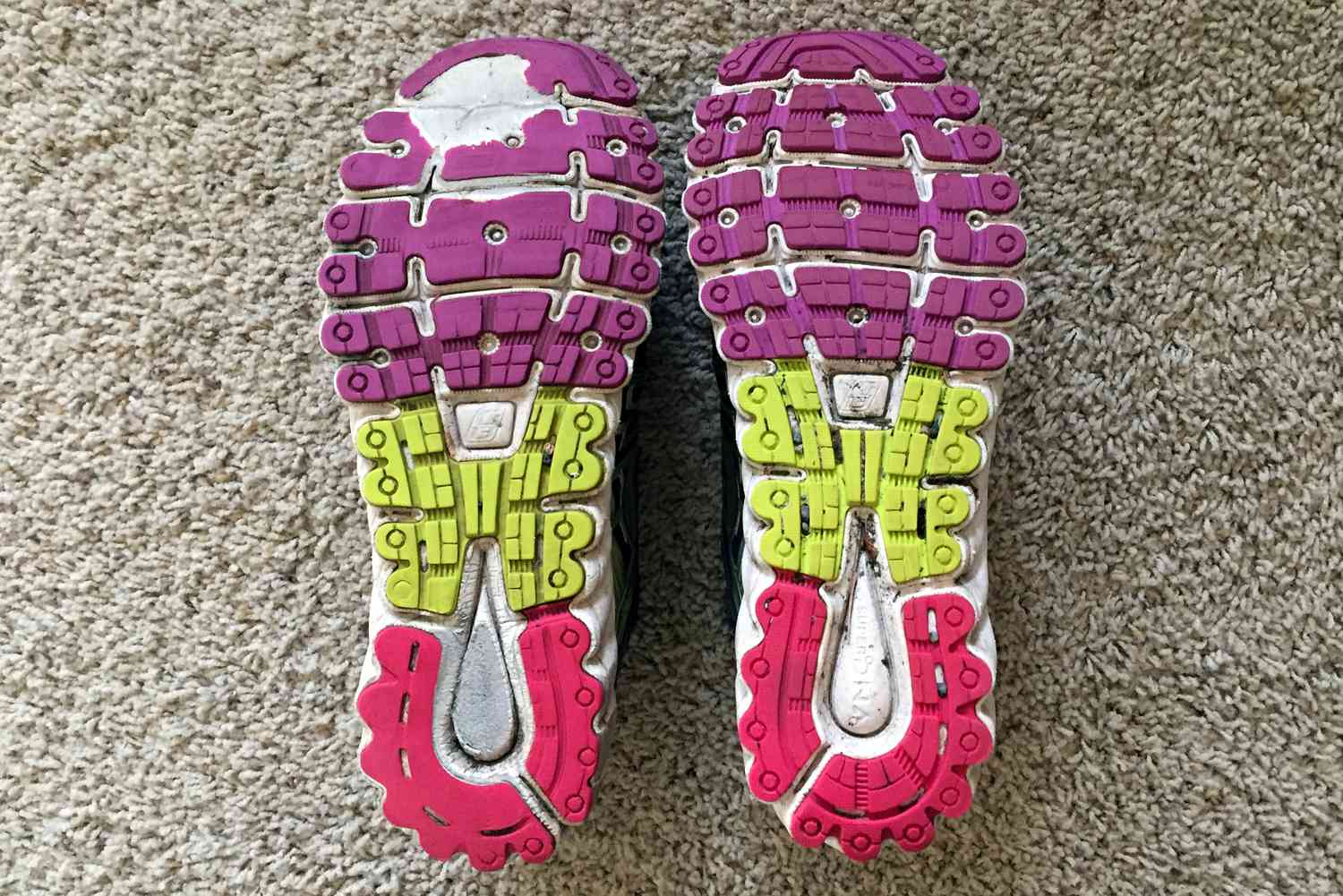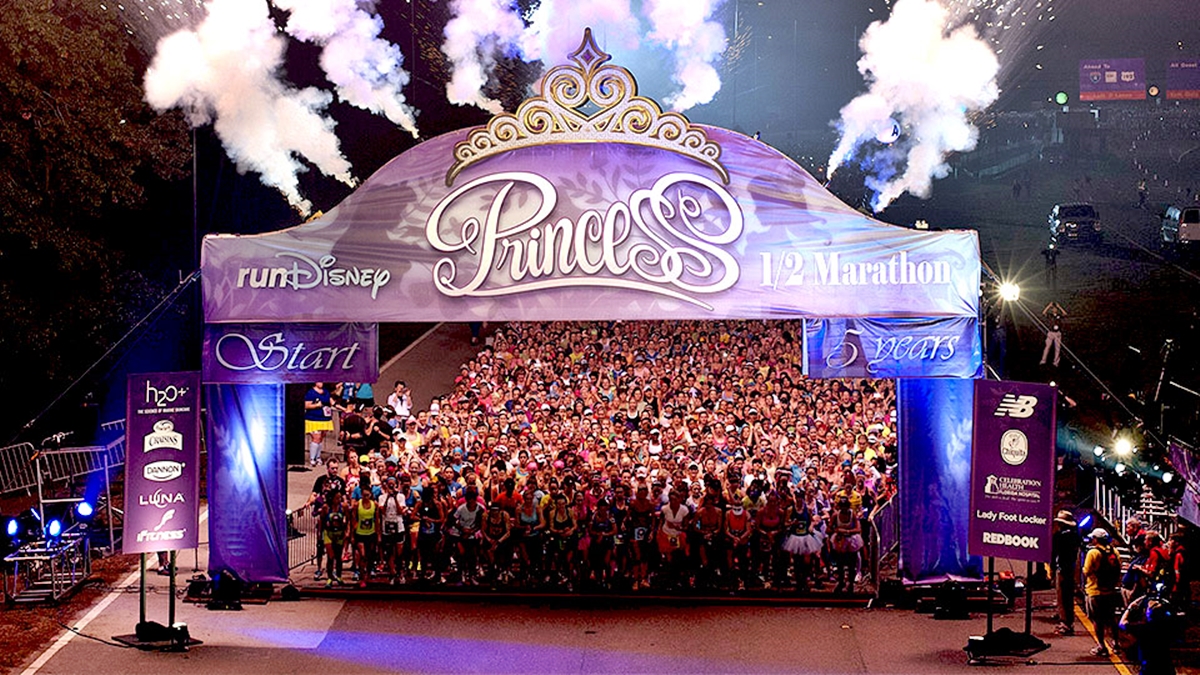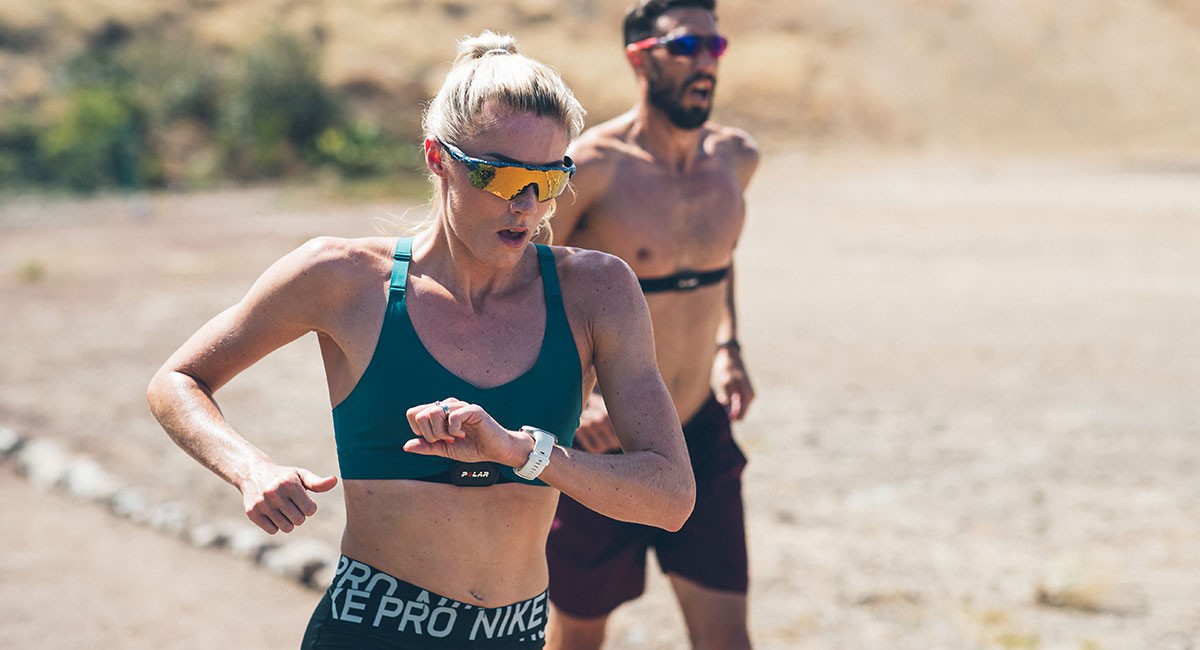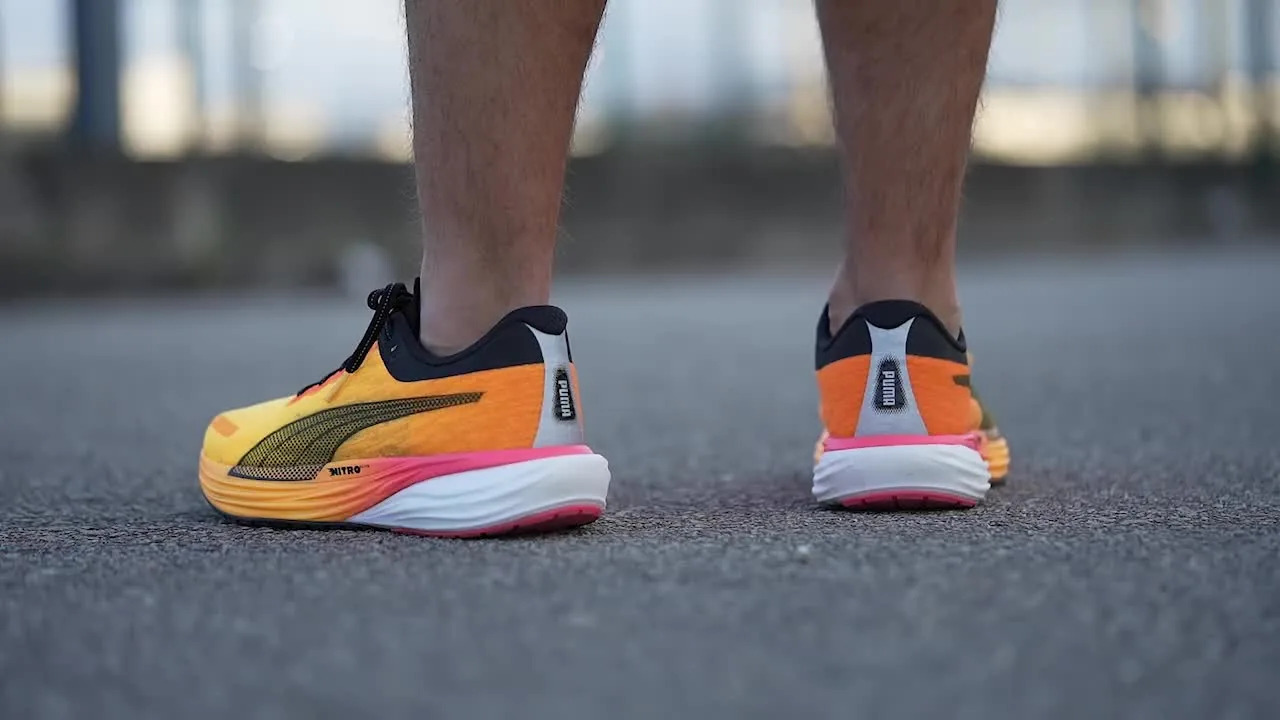Home>Misc>Featured>How Are Running Shoes Different Than Cross Training
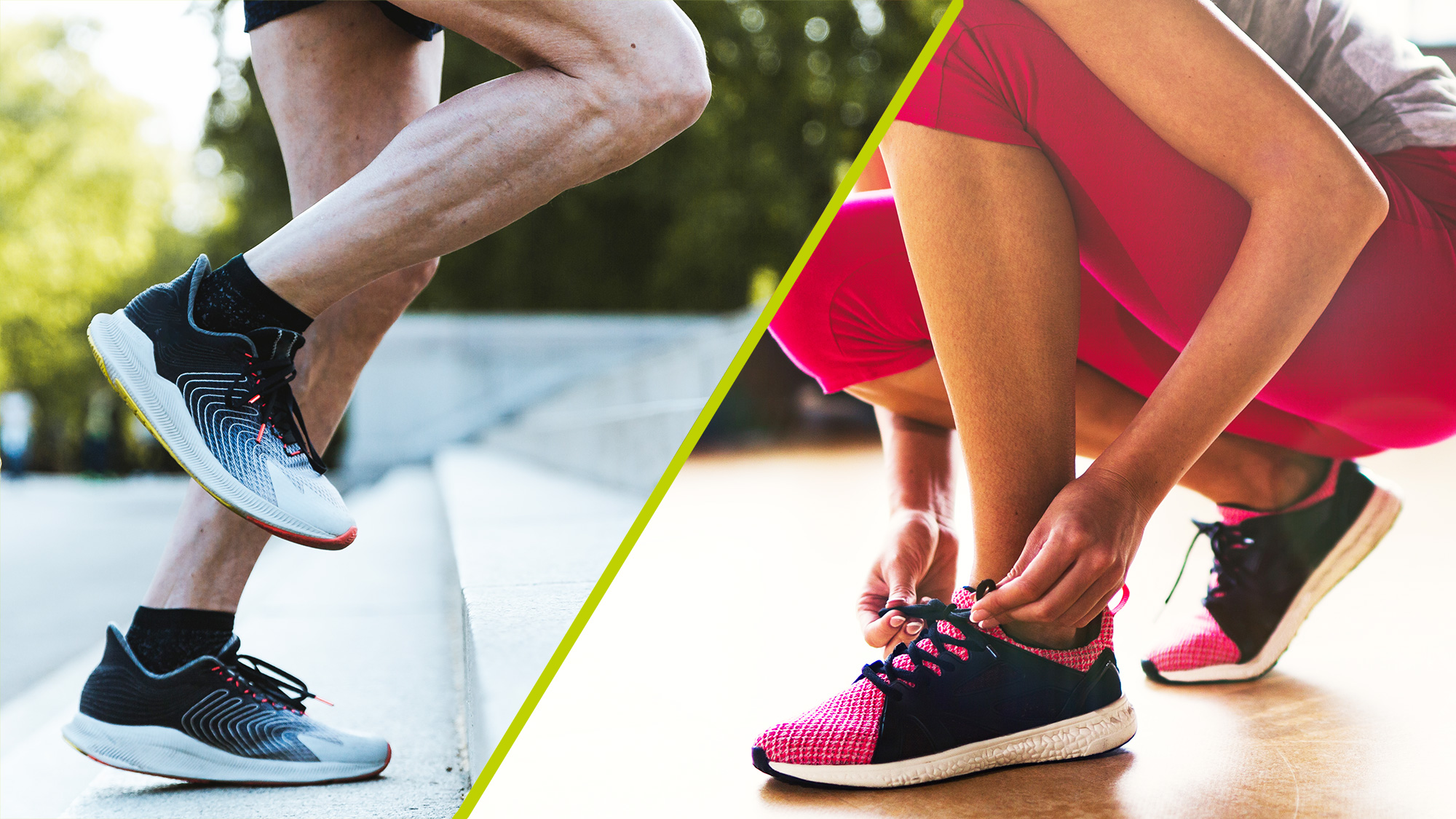

Featured
How Are Running Shoes Different Than Cross Training
Modified: August 22, 2023
Discover the key differences between running shoes and cross training shoes in this featured article. Find out which pair is right for your fitness routine.
Introduction
Welcome to the world of athletic footwear, where the right pair of shoes can empower you to reach new heights in your fitness journey. Whether you’re a dedicated runner or a fitness enthusiast looking for a versatile shoe, understanding the differences between running shoes and cross training shoes is crucial. While both types of shoes might seem similar on the surface, they are specifically designed to support different activities and movement patterns.
Running shoes are tailored to optimize performance and provide comfort during running activities such as jogging, long-distance running, or sprints. On the other hand, cross training shoes are engineered to handle a wide range of activities, including weightlifting, aerobics, and cross training exercises. While both shoes offer benefits, their distinct features dictate their suitability for specific activities.
So, if you’re ready to dive into the fascinating world of athletic footwear, this article will guide you through the differences between running shoes and cross training shoes. By understanding these distinctions, you’ll be able to choose the right pair of shoes that aligns with your fitness goals and ensures a comfortable and injury-free training experience.
Purpose of Running Shoes
Running shoes are specifically designed to provide support, comfort, and protection for runners during their exercise routines. The primary purpose of running shoes is to enhance performance and reduce the risk of injuries associated with running activities. Here are some key aspects of running shoes that contribute to their purpose:
- Shock Absorption: Running shoes are equipped with cushioning materials such as gel, foam, or air pockets in the midsole. This feature helps to absorb the impact of each footstrike and reduce the stress on the joints, muscles, and bones.
- Stability and Motion Control: The design of running shoes focuses on providing stability and control of motion. This is achieved through features such as a wider outsole, a supportive heel counter, and extra arch support. These elements help to prevent overpronation (excessive inward rolling of the foot) or supination (excessive outward rolling of the foot).
- Flexibility: Running shoes are designed to allow natural movement of the foot while providing adequate support. The flexibility of the shoe ensures that the foot can flex and bend during the running gait cycle, allowing for a more efficient stride.
- Breathability: Running shoes often incorporate mesh or breathable materials in the upper to promote airflow and keep the feet cool and dry during prolonged runs.
By focusing on these key elements, running shoes help to minimize the impact of each stride, provide stability, and ensure optimal comfort for runners. Additionally, running shoes are designed to accommodate the repetitive, forward motion and heel-to-toe stride pattern associated with running activities.
Purpose of Cross Training Shoes
Cross training shoes are a versatile footwear option that cater to a range of activities beyond just running. Whether you’re engaging in weightlifting, aerobic exercises, or participating in a variety of training sessions, cross training shoes are designed to meet the demands of these diverse activities. Here are some key elements that define the purpose of cross training shoes:
- Stability: Cross training shoes prioritize stability, allowing you to perform multidirectional movements with confidence. These shoes often feature a wider base, a sturdy midsole, and reinforced lateral support to prevent ankle rolls or injuries during lateral movements.
- Support: Cross training shoes aim to provide ample support for various activities. They offer additional ankle support and cushioning to handle the impact of activities like jumping, side-to-side movements, and quick changes in direction.
- Durability: Cross training shoes are built to withstand the wear and tear of different workouts. They typically have reinforced areas, such as the toe box and heel, to handle the stress of weightlifting exercises or high-intensity workouts.
- Versatility: The purpose of cross training shoes is to cater to a wide range of activities and movements. These shoes offer a balance between flexibility and stability, allowing you to perform exercises such as burpees, lunges, squats, and agility drills.
Unlike running shoes that prioritize forward motion, cross training shoes are designed to support lateral movements, such as cutting, jumping, and pivoting. They offer a stable platform to ensure optimal performance and reduce the risk of injuries during dynamic exercises.
Whether you’re hitting the gym, attending a group exercise class, or engaging in a cross training regimen, the purpose of cross training shoes is to provide the necessary support and versatility to tackle these different activities effectively.
Differences in Design and Structure between Running Shoes and Cross Training Shoes
Running shoes and cross training shoes differ significantly in their design and structure due to the specific requirements of the activities they are intended for. Here are the key differences between the two:
- Weight: Running shoes are generally lighter in weight compared to cross training shoes. This is because they are designed to optimize speed and efficiency during running activities. On the other hand, cross training shoes tend to be slightly heavier to provide stability and support during various movements.
- Flexibility: Running shoes have a greater emphasis on flexibility to allow for a natural and unrestricted range of motion. The materials used in the midsole and upper are often more responsive and bendable. In contrast, cross training shoes prioritize stability and lateral support, which requires a slightly stiffer construction to prevent foot and ankle injuries during quick lateral movements.
- Heel-to-Toe Drop: The heel-to-toe drop refers to the height difference between the heel and forefoot of the shoe. Running shoes generally have a higher heel-to-toe drop, promoting a more forward-leaning posture that aids in efficient running mechanics. Conversely, cross training shoes typically have a lower heel-to-toe drop to provide a stable and flat platform for various activities.
- Traction: Running shoes have a specific outsole pattern that is optimized for running on various surfaces. They often feature deep grooves and multidirectional treads to provide superior traction on roads or trails. In contrast, cross training shoes prioritize lateral stability and traction. The outsole is designed to grip the floor during quick lateral movements, jumps, and pivots.
- Cushioning: Running shoes typically have more cushioning in the midsole to absorb impact forces and provide a comfortable ride during long-distance running. Cross training shoes, on the other hand, have a firmer midsole that offers stability during weightlifting exercises while still providing enough cushioning for other activities.
These differences in design and structure between running shoes and cross training shoes reflect the specific needs of each activity. Running shoes prioritize lightweight construction, flexibility, and cushioning for optimal performance and protection during running. Cross training shoes, on the other hand, prioritize stability, lateral support, and versatility to handle a wide range of movements and activities.
Cushioning and Support in Running Shoes versus Cross Training Shoes
The level of cushioning and support in running shoes differs from that in cross training shoes, reflecting the specific needs of each activity. Let’s explore the differences in cushioning and support between these two types of footwear:
Cushioning:
Running shoes are designed with a primary focus on cushioning to absorb the impact forces generated during running. This cushioning is typically found in the midsole of the shoe and is intended to provide a comfortable and protective ride. The amount of cushioning can vary depending on the type of running shoe, with more cushioning typically found in shoes designed for long-distance running. The cushioning in running shoes helps to reduce the stress on the muscles, joints, and bones, improving overall comfort and preventing injuries such as shin splints or stress fractures.
In contrast, cross training shoes do have cushioning, but it is usually less prominent compared to running shoes. While cross training shoes need to provide adequate cushioning for activities like jumps or agility drills, they also need sufficient stability and responsiveness. The cushioning in cross training shoes is often firmer, as it needs to support weightlifting exercises or quick lateral movements. This firmer cushioning allows for better energy transfer during explosive movements and provides a solid base for lifting weights.
Support:
Running shoes offer different levels of support depending on the pronation needs of the runner. Pronation refers to the natural inward rolling of the foot during the running gait cycle. Running shoes are available in different categories such as neutral, stability, or motion control to cater to runners with varying pronation needs.
Neutral running shoes provide a balanced amount of support for runners with a natural gait and minimal pronation. Stability running shoes offer additional support through features such as reinforced arch support or a denser midsole to control mild to moderate levels of pronation. Motion control running shoes are designed with maximum support to combat overpronation, providing a structured platform to prevent excessive inward rolling of the foot.
In contrast, cross training shoes prioritize overall stability and lateral support to accommodate a range of movements. The support in cross training shoes is distributed across the entire shoe, with features like a wider base and reinforced sidewalls. This structural support helps to stabilize the foot during lateral movements, jumps, and weightlifting exercises and prevents ankle rolls or foot strain.
Understanding the cushioning and support differences between running shoes and cross training shoes is crucial in choosing the right footwear for your specific activity. Whether you’re a dedicated runner seeking optimal cushioning or a fitness enthusiast engaging in a variety of exercises, selecting the appropriate shoe will enhance your performance and minimize the risk of injuries.
Outsole and Traction Differences between Running Shoes and Cross Training Shoes
The outsole and traction of running shoes and cross training shoes vary significantly to cater to the specific demands of each activity. Let’s delve into the differences between the outsole and traction of these two types of footwear:
Outsole:
The outsole of running shoes is designed to optimize performance and grip on various surfaces encountered during running. It typically features a specific pattern of grooves and treads that promote efficient forward motion. Running shoe outsoles are designed to minimize resistance, allowing for smooth and natural foot transitions throughout the gait cycle. The outsole material of running shoes is often made of durable rubber or specialized compounds to withstand the impact and abrasion associated with running on roads or trails.
Cross training shoes, on the other hand, have a different outsole design to cater to the multidirectional movements involved in activities such as weightlifting, aerobics, and agility training. The outsoles of cross training shoes emphasize stability and grip during lateral movements, jumps, and quick changes of direction. The outsole materials of cross training shoes are often made of rubber compounds that strike a balance between traction and durability.
Traction:
Running shoes prioritize forward motion and are designed to provide optimal traction on roads, trails, or other running surfaces. The treads in running shoe outsoles are typically designed to channel water away and provide grip on wet or slippery surfaces. The pattern of grooves and treads in running shoe outsoles varies depending on the type of running shoe and the intended terrain. For example, trail running shoes have deeper and more aggressive treads to provide enhanced traction on uneven and challenging surfaces.
Cross training shoes, on the other hand, prioritize lateral stability and traction. The outsole pattern of cross training shoes is designed to provide grip during quick lateral movements, jumps, and pivots. The outsole may have varied patterns of treads and grooves to maximize surface contact and prevent slippage during multidirectional activities. The traction in cross training shoes is essential for maintaining stability and preventing injuries during dynamic movements.
Understanding the differences in outsole design and traction between running shoes and cross training shoes is crucial in selecting the appropriate footwear for your specific activities. Whether you’re hitting the pavement for a run or engaging in a variety of cross training exercises, ensuring proper traction and stability will enhance your performance and reduce the risk of slips, falls, or ankle injuries.
Flexibility and Stability Variations in Running Shoes versus Cross Training Shoes
The flexibility and stability of running shoes and cross training shoes differ to accommodate the specific needs of each activity. Let’s delve into the variations in flexibility and stability between these two types of footwear:
Flexibility:
Running shoes are designed to provide a good degree of flexibility to allow for a natural and unrestricted range of motion. The materials used in the midsole and upper of running shoes are often more responsive and bendable, allowing the foot to flex and move freely during the running gait cycle. The flexibility of running shoes enables efficient toe-offs, smooth transitions, and a more natural stride.
On the other hand, cross training shoes prioritize stability and lateral support over flexibility. While cross training shoes do offer some level of flexibility, they are generally stiffer compared to running shoes. The increased stiffness of cross training shoes helps to support the foot during lateral movements, jumps, and weightlifting exercises. It provides a solid base for stability during multidirectional activities, reducing the risk of ankle rolls and promoting better balance.
Stability:
Running shoes focus on stability as well, but their primary goal is to support forward motion. The design of running shoes incorporates features such as a wider outsole, a supportive heel counter, and extra arch support to ensure stability during the repetitive, linear movements of running. These stability features help to control excessive inward rolling of the foot (overpronation) or outward rolling of the foot (supination), reducing the risk of injuries and improving running efficiency.
Cross training shoes prioritize overall stability, especially during lateral movements and jumps. They have a wider base and additional support in the midfoot and heel areas to prevent foot and ankle injuries during quick lateral movements. The supportive construction of cross training shoes keeps the foot steady and properly aligned, providing stability throughout a range of activities, from weightlifting to aerobics.
Understanding the differences in flexibility and stability variations between running shoes and cross training shoes is essential in selecting the appropriate footwear for your specific activities. Whether you’re focused on running or engaging in a variety of cross training exercises, finding the right balance of flexibility and stability will enhance your performance, improve your technique, and minimize the risk of injuries.
Impact on Performance and Injury Prevention in Running Shoes and Cross Training Shoes
The choice of footwear, whether it’s running shoes or cross training shoes, can have a significant impact on performance and injury prevention. Understanding how each type of shoe influences these factors is crucial in selecting the appropriate footwear for your activities. Let’s explore the impact of running shoes and cross training shoes on performance and injury prevention:
Performance:
Running shoes are specifically designed to optimize performance during running activities. The cushioning and responsive midsole of running shoes enhance comfort and energy return, enabling runners to maintain an efficient stride and better overall running economy. The lightweight and flexible design of running shoes further facilitate a more natural and fluid motion, allowing for quicker foot turnover and improved speed.
Cross training shoes, while not specifically designed for running, still offer solid performance benefits for various activities. The stability and lateral support of cross training shoes provide a solid foundation for quick lateral movements, jumps, and weightlifting exercises. This stability enhances control, balance, and power output, allowing for better performance in all-round fitness training sessions.
Injury Prevention:
Running shoes are engineered to reduce the risk of running-related injuries. The cushioning properties of running shoes absorb impact forces and help to distribute the load during foot strikes, protecting the muscles, joints, and bones from excessive stress. The support and stability features in running shoes, such as arch support and heel counters, help to control pronation and prevent issues like plantar fasciitis, shin splints, and knee pain caused by improper alignment.
While cross training shoes may not offer the same level of cushioning as running shoes, they provide essential support and stability for injury prevention. The wider base, reinforced sidewalls, and supportive midsole of cross training shoes help to prevent ankle rolls and foot strain during lateral movements and quick changes of direction. The stiffer construction of cross training shoes is advantageous for weightlifting exercises, providing a stable platform and reducing the risk of injuries resulting from poor form or instability.
Choosing the right footwear for specific activities is crucial to optimize performance and prevent injuries. Running shoes are the go-to choice for dedicated runners, offering the necessary cushioning, support, and flexibility for a comfortable and efficient running experience. Cross training shoes, on the other hand, provide versatility, stability, and lateral support for a range of activities beyond running, making them suitable for all-round fitness enthusiasts.
Ultimately, selecting the appropriate shoe should be based on the primary activity you engage in, while considering secondary activities and any specific foot conditions or pronation needs you may have. Prioritize comfort, fit, and function to enhance performance, and reduce the risk of injuries during your workouts.
Choosing the Right Shoes for Different Activities
When it comes to selecting the right shoes for different activities, understanding the specific demands of each activity is essential. Whether you’re a runner, a weightlifter, or a fitness enthusiast engaged in a variety of exercises, choosing the appropriate footwear can enhance your performance, comfort, and safety. Here are some factors to consider when selecting shoes for different activities:
Running:
- Opt for running shoes specifically designed for your type of running, such as road running or trail running.
- Consider your pronation needs and choose a shoe that offers adequate stability or support based on your foot mechanics.
- Ensure the shoes provide ample cushioning to absorb impact and reduce the risk of injuries.
- Look for shoes with a flexible and lightweight construction for a natural and efficient running stride.
Weightlifting:
- Choose cross training shoes or weightlifting shoes known for their stability and firm sole.
- Look for shoes that offer a secure and snug fit to prevent foot movement inside the shoe during heavy lifts.
- Ensure the shoes provide a solid and flat base to maximize stability and power transfer during lifts.
- Consider shoes with a raised heel if you need more ankle mobility or if you prefer a more upright posture during squats or Olympic lifts.
Cross Training:
- Opt for cross training shoes that offer versatility and support for various activities, such as aerobics, agility drills, and weightlifting.
- Ensure the shoes provide adequate stability, lateral support, and cushioning to handle multidirectional movements and jumps.
- Look for shoes with a durable outsole that offers traction on different surfaces.
- Consider the overall fit and comfort of the shoes, as you’ll be engaging in a variety of activities.
General Fitness and Gym Workouts:
- Choose cross training shoes that offer a balance of stability, flexibility, and support for various workouts and exercises.
- Ensure the shoes provide cushioning for comfort during high-impact exercises like jumping or running on a treadmill.
- Consider shoes with a breathable upper to help keep your feet cool and dry during intense workouts.
- Look for shoes with a durable outsole that provides traction on gym floors.
It’s important to keep in mind that everyone’s foot shape, biomechanics, and preferences may vary. What works for one person may not work for another. Therefore, it’s recommended to try on different brands and models, and consult with a knowledgeable professional, such as a shoe specialist or podiatrist, to help identify the best shoe for your specific needs.
Investing in high-quality shoes that are appropriate for your chosen activities will not only enhance your performance but also reduce the risk of foot and lower limb injuries, ensuring a comfortable and injury-free training experience.
Conclusion
Choosing the right shoes for different activities is crucial for maximizing performance, comfort, and safety. Whether you’re a runner, a weightlifter, or a fitness enthusiast engaged in a variety of exercises, understanding the specific requirements of each activity is essential in selecting the appropriate footwear.
Running shoes are designed to provide cushioning, support, and flexibility for optimal performance and injury prevention during running activities. Cross training shoes, on the other hand, prioritize stability, lateral support, and versatility to handle various movements and exercises beyond running.
Consider your specific needs when it comes to cushioning, support, traction, flexibility, and stability. For running, choose shoes that offer ample cushioning, support your pronation needs, and provide a lightweight and flexible design. For weightlifting, opt for cross training or weightlifting shoes that offer stability, a secure fit, and a firm sole. When it comes to general fitness and cross training, prioritize shoes that offer versatility, support, and comfort to handle a range of activities.
Remember, everyone’s foot shape, biomechanics, and preferences may vary, so it’s crucial to try on different brands and models to find the best fit for you. Consultation with a shoe specialist or podiatrist can also provide valuable insights and recommendations.
By investing in high-quality footwear that suits your specific activities, you not only enhance your performance but also reduce the risk of foot and lower limb injuries. With the right shoes on your feet, you’ll be able to pursue your fitness goals with confidence, knowing that your shoes are supporting you every step of the way.
